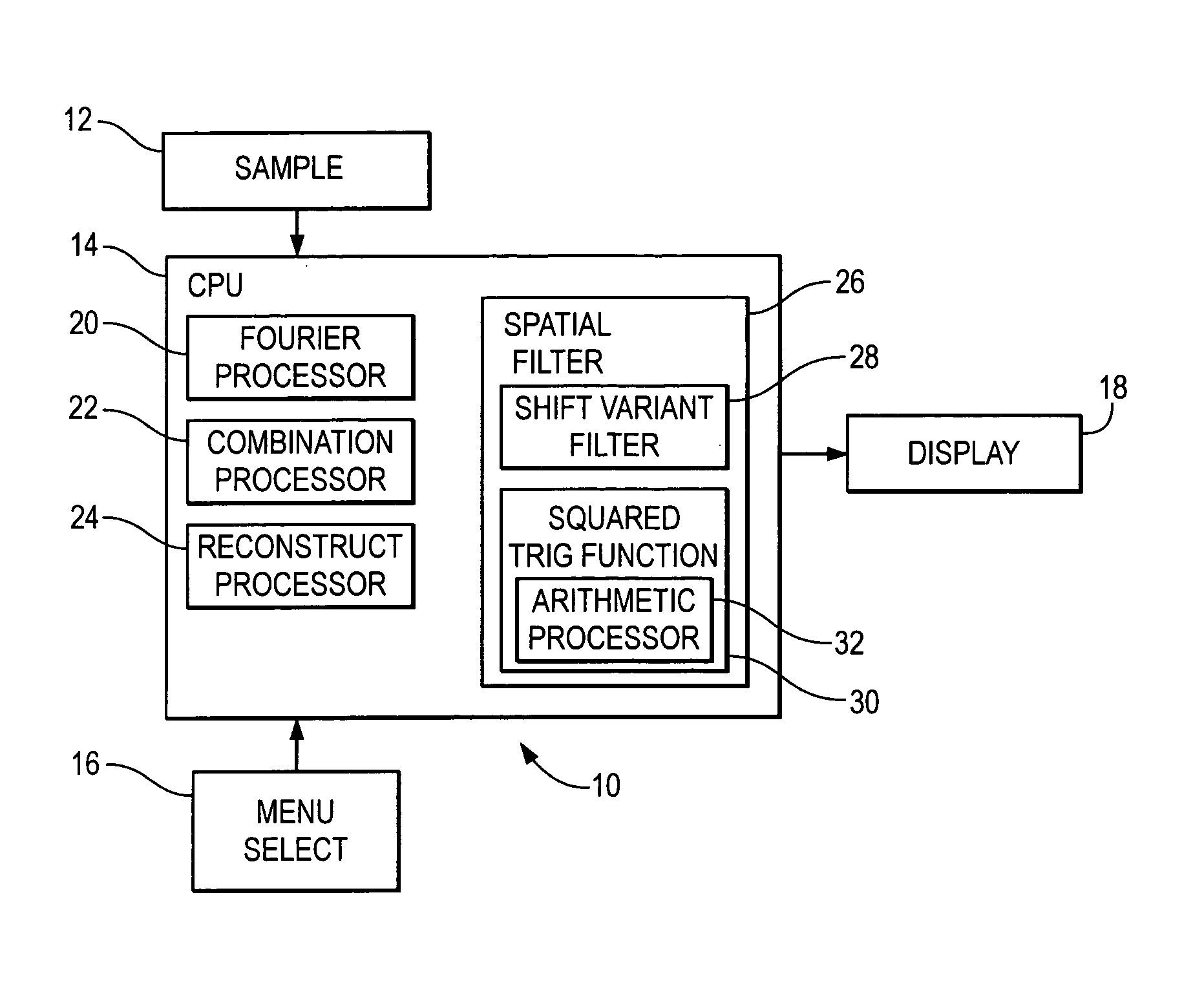Algorithm for image reconstruction and image noise analysis in computed tomography
a computed tomography and image noise analysis technology, applied in the field of computed tomograpy, can solve problems such as reducing image resolution
- Summary
- Abstract
- Description
- Claims
- Application Information
AI Technical Summary
Problems solved by technology
Method used
Image
Examples
Embodiment Construction
[0036]In this description, mathematical notations are used that characterize the fan-beam geometry in a typical CT scanner. As shown in FIG. 3, a continuous fan-beam projection q(γ,β)is acquired at a view angle β. The collection of q(γ,β) for |γ|≦γmax and βε[0,2π) is referred to as the continuous fan-beam sinogram, where γmax is defined in FIG. 3. The format followed herein will be to first summarize the FFBP and the previous hybrid algorithm in their continuous and discrete forms. Following the summary of FFBP and previous hybrid algorithm, the new hybrid algorithm will be discussed.
[0037]The well-known FFBP algorithm that reconstructs an image directly from a fan-beam sinogram q(γ,β) is given by
[0038]a(x,y)=12∫02πⅆβFL2∫-γmaxγmaxⅆγcosγq(γ,β)[γ0′-γsin(γ0′-γ)]2h(γ0′-γ),(1)
where the constant F denotes the known focal length, 2γmax is the maximum fan angle, h is the spatial domain representation of the ramp filter, and L and γ′o are functions of the image-space coor...
PUM
 Login to View More
Login to View More Abstract
Description
Claims
Application Information
 Login to View More
Login to View More - R&D
- Intellectual Property
- Life Sciences
- Materials
- Tech Scout
- Unparalleled Data Quality
- Higher Quality Content
- 60% Fewer Hallucinations
Browse by: Latest US Patents, China's latest patents, Technical Efficacy Thesaurus, Application Domain, Technology Topic, Popular Technical Reports.
© 2025 PatSnap. All rights reserved.Legal|Privacy policy|Modern Slavery Act Transparency Statement|Sitemap|About US| Contact US: help@patsnap.com



